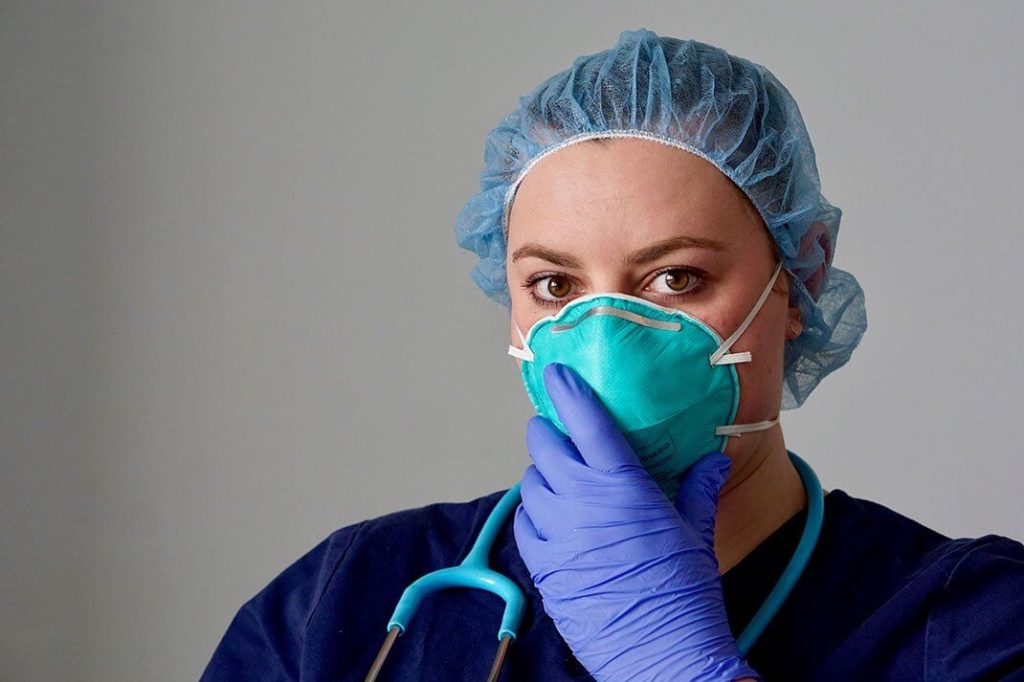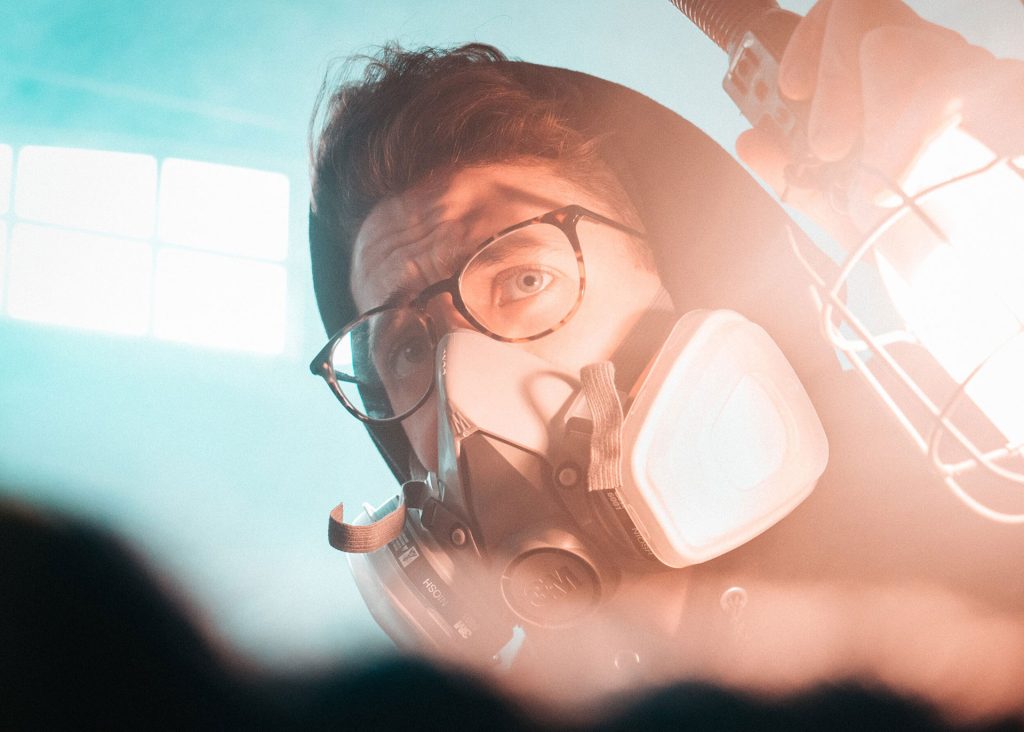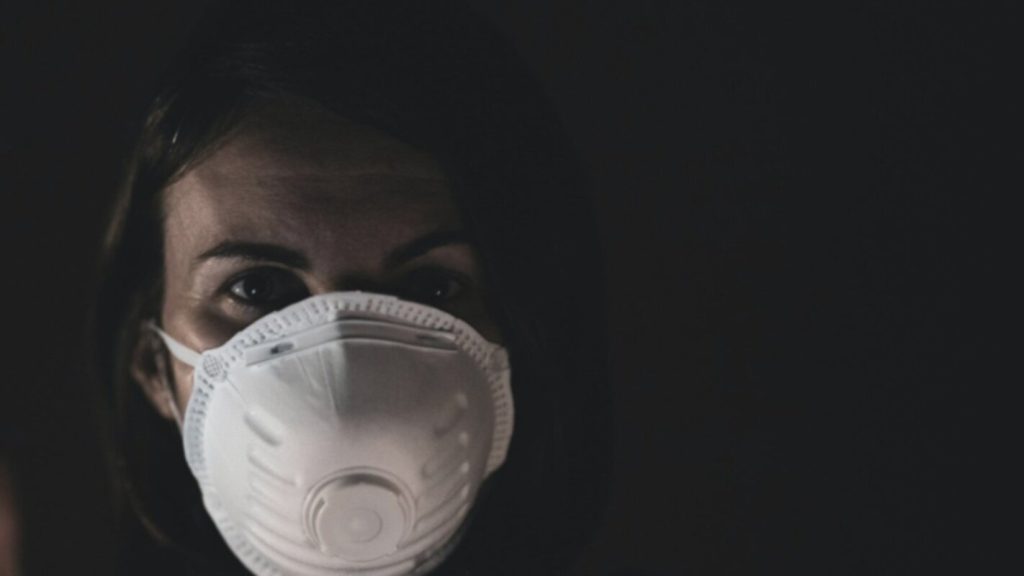The COVID-19 pandemic impacted the American workforce in a variety of ways. Healthcare was one of the most affected industries, and Vest has received a number of questions from health and safety professionals about Respiratory Protection in healthcare settings. Below you’ll find answers to several common questions about Respiratory Protection in Healthcare.
What are the primary respiratory hazards in healthcare?
Airborne Pathogens
- Airborne pathogens are the most common respiratory exposures for healthcare workers. Airborne pathogens traditionally present a respiratory particulate hazard to employees in a healthcare setting. These types of pathogens include respiratory diseases such as tuberculosis, SARS-CoV (COVID19), pneumonia, and MRSA.
Chemicals
- Respiratory chemical exposures are relatively limited in the healthcare setting. However, certain departments must be prepared in the event they must respond to a chemical spill or release as well as in chemical decontamination situations. The departments may include Pharmacy, Environmental Services, Emergency Preparedness, Emergency Department, and Laboratory employees.
What types of respirators are used in healthcare?
No one respirator type is appropriate for all situations. The appropriate type of respirator is determined by the type of exposure the employee may encounter. Below are the most common respirator types used in healthcare:
- Filtering Facepiece (FFP): The most common type of respiratory protection used in a hospital or healthcare setting is the filtering facepiece respirator. The most common filtering facepiece in healthcare is the N95. These are tight fitting respirators which provide adequate protection to filter at least 95% of airborne particulates.
- Half-Face or Full-Face Elastomeric: Half-face and full-face elastomeric respirators are often used in healthcare settings when supplies of filtering-facepieces are limited. These respirators must be equipped with a particulate filter or particulate combination filter to adequately protect from airborne pathogens. Exhalation valves must be carefully considered when selecting half-face and full-face elastomeric respirators to protect against airborne hazards.
- Powered Air Purifying Respirator (PAPR, pronounced PAP-R): A PAPR is a loose-fitting respirator used in healthcare settings to protect workers from airborne contaminants. These respirators are much more expensive than filtering facepiece respirators, so they are typically reserved for employees who cannot be fit with a filtering facepiece respirator due to religious exemptions, facial hair, facial disfigurement, or other special considerations.
How do the three respirator types above address the safety hazards in healthcare?
- Filtering Facepiece respirators are appropriate for airborne pathogen hazards but are not appropriate for chemical exposures.
- Half Face or Full-Face Elastomeric respirators are appropriate for both airborne pathogen and chemical exposures when the appropriate filtration cartridges are used (the filtration cartridge/filtering media must be specific to the type of hazard). Most particulate filters provide adequate protection against airborne pathogens. However, always refer to manufacturer specifications when selecting filtering media.
- Powered Air Purifying respirators are appropriate for both airborne pathogen and chemical exposures when the appropriate filtration cartridges are used (the filtration cartridge/filtering media must be specific to the type of hazard). As with half-face and full-face elastomeric respirators, the correct filtering media must be selected to ensure proper protection.
What is a respirator exhalation valve?
A respirator exhalation valve is a feature of many half-face and full-face elastomeric respirators. The valve permits minimal inward leakage of air contaminants and provides low resistance during exhalation to provide more comfort to the user. While exhalation valves make it easier to breathe due to exhaled air being able to escape through the opening, the opening also exposes the environment to the user’s exhalation. This aspect of exhalation valves is especially important when a sterile environment must be preserved (as in a ‘clean room’). A respirator with an exhalation valve would not be appropriate for situations where a sterile environment must be maintained.
Some manufacturers sell exhalation valve filters that address the issue of exhalation into a sterile environment. However, the usage of a respirator with an exhalation valve is not recommended when alternatives such as filtering facepieces or PAPRs are available.
Which hospital employees are exposed to hazards?
Employees who work in a hospital or healthcare setting may be exposed to respiratory hazards as part of their normal job tasks if they provide emergent care or work with patients on airborne precautions. However, there are certain job types and departments in a hospital which may have more opportunity for exposure than others. The following list is not exhaustive, and each job task must be carefully evaluated as part of the Job Hazard Analysis process to determine if hazards exist which require the use of respiratory protection.
| Airborne Pathogens | Chemical Exposures |
| Nursing Respiratory Therapy Environmental Services Imaging Emergency Department Laboratory Phlebotomy Perioperative Services | Pharmacy Environmental Services Facilities Engineering Emergency Preparedness |
In addition to hospital settings, many healthcare systems offer home care, hospice, and assisted living services. These settings also present potential opportunity for exposure to respiratory hazards.
What steps can a healthcare company can take to protect employees from respiratory hazards?
Healthcare companies have many options for protecting workers from respiratory hazards, including engineering and administrative controls. Some examples are listed below.
Engineering Controls
- Airborne infection isolation rooms (dedicated negative pressure rooms) which are used to isolate a patient who may be infectious
- Installation of appropriate air-handling systems with HEPA filtration
Administrative Controls
- Completion of patient screening to identify symptoms which present respiratory hazards
- Requiring patients to wear surgical masks or face coverings
- Increased cleaning and disinfection of high touch surfaces such as door handles, light switches, and countertops
Healthcare employers must implement controls, if feasible, to prevent employee exposure to respiratory hazards. If respiratory hazards cannot be eliminated, a Respiratory Protection Program must be implemented.
What do the OSHA standards require from a healthcare company regarding respiratory protection?
The Respiratory Protection Standard (1910.134) requires employers who have uncontrolled occupational respiratory hazards to implement a Respiratory Protection Program (RPP). The RPP documents how the employer protects its employees from respiratory hazards and includes the following procedures:
- Selection of respirators
- Medical evaluation
- Fit testing for tight fitting respirators
- Proper respirator use
- Cleaning, disinfecting, storing, inspecting, repairing, discarding, and general maintenance
- Respirator training
- Evaluation of the effectiveness of the respiratory protection program
Does the Joint Commission have requirements regarding respiratory protection?
The Joint Commission requires that employers meet regulatory requirements. This includes the OSHA Respiratory Protection Standard.
The Joint Commission has developed a respiratory protection guide which refers to the CDC guidelines for respiratory protection as well as OSHA’s Respiratory Protection program.
Do events like COVID-19 or other major pandemics affect respiratory protection requirements in healthcare?
Events like COVID-19 do not change the requirement that employers protect their employees from exposures to airborne hazards such as respiratory diseases. Many healthcare systems were conducting medical evaluations, fit testing, and respiratory protection training before the COVID-19 pandemic occurred. However, the pandemic did bring to light some of the potential deficiencies in planning and preparation for such an event.
In the beginning of the COVID-19 pandemic, there were global shortages of respiratory protection equipment, especially the disposable N95 filtering facepiece respirator. Healthcare workers were required to implement strategies to preserve the supply of respirators such as extending the useful life by days to even weeks in certain situations.
The COVID19 pandemic brought to light the significant need for Emergency Preparedness planning and how worker safety can be affected by equipment shortages.
OSHA issued an Emergency Temporary Standard (ETS) specific to COVID-19 exposure in the workplace. The OSHA ETS added additional responsibilities for a Mini-Respiratory Protection Program (Mini-RPP). This new Mini-RPP places an additional requirement on employers to provide training to employees who wear respiratory protection voluntarily or bring in their own respirators to work. The Mini-RPP does not change the existing requirements of the OSHA Respiratory Protection Standard.
What are best practices for respiratory protection in healthcare?
The most important part of any Respiratory Protection Program is to conduct a comprehensive analysis to determine when respiratory protection is necessary to protect the health and safety of workers. To perform this analysis effectively, the employer must complete an evaluation of procedures and processes which generate airborne hazards such as airborne pathogens or chemicals.
The usage of respiratory protection may place a burden on the wearer. As such, only employees who have occupational exposure to airborne hazards should use respiratory protection. And those employees must be medically cleared for respirator use prior to fit testing and using a respirator for the first time. Fit testing and medical evaluations should then be completed at least annually to ensure preparedness and protection of workers.



